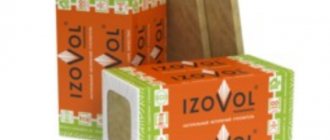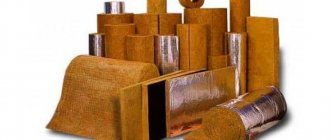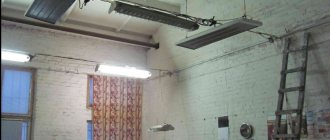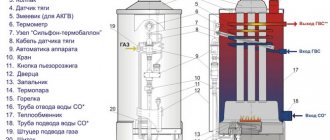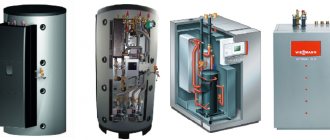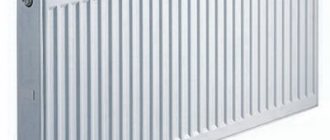Household infrared lamps as heating equipment are a promising and interesting solution. Agree: it’s a good idea to acquire a compact device with high efficiency, which is also easy to use. But you don't know what to consider when choosing an IR bulb?
We will tell you how to choose the best IR light bulb for your home, garden and farmstead. The article we have presented discusses the features of their design, provides the pros and cons, and the appropriateness of use. To make the task of choosing easier, the best manufacturers with a reputation in the lighting market are listed.
To help customers, the information is supplemented with photographs of IR bulbs, video recommendations and useful tips. Taking into account our recommendations, you can easily find a device that can provide high-quality heat with characteristics comparable to the sun’s rays.
What is an infrared lamp
A device that emits electromagnetic waves includes the same components as a tungsten filament light source. IR lamp contains:
- filament element;
- a glass flask filled with a mixture of gases;
- base
When tungsten is heated to temperatures above 570°C, energy is released. In IR lamps, infrared light is produced by electromagnetic vibrations. A mixture of argon and nitrogen inside a glass flask and an incandescent filament create conditions for the release of heat in the infrared range.
IR light
Visually, infrared waves are not visible, but an increase in room temperature is felt. To change the color of the emitted energy, manufacturers make the bulbs blue and red. The colors regulate the light output and minimize the risk of skin burns and vision impairment.
Medical uses of IR lamps
Today, when self-medication is quite common, medical devices with IR lamps can be found in most pharmacies and institutions that sell medical equipment.
These devices are used for home phototherapy sessions. It is generally accepted that IR radiation, acting on a local area of the skin, improves its blood supply and accelerates metabolism in the subcutaneous tissues, which contributes to a general improvement in well-being.
The main use of these devices is recommended for the following diseases:
- Treatment of colds (acute respiratory) diseases, in case of complications with rhinitis or tonsillitis, as well as for the treatment of otolaryngeal diseases.
- To relieve pain and spasms in muscles.
- Treatment of joints in case of pain of arthritic etiology.
- To reduce high blood pressure and prevent stroke and heart attack.
However, when using this type of device at home, you need to remember certain precautions. Some diseases do not allow the use of infrared radiation not only as a therapeutic, but also as a prophylactic agent. They are contraindicated for patients with cancer, tuberculosis and the presence of a purulent inflammatory process.
The use of infrared radiation is not recommended for women during pregnancy, patients or those suffering from chronic pulmonary or heart failure. It is strictly forbidden to use infrared phototherapy while taking immunomodulators and hormonal drugs.
Beurer IR lamp
For medical use as a local heater or during phototherapy sessions, the most common are various models of IR devices:
- "Beurer" (Germany) , costing 1100-2900 rubles (depending on the power of the emitter and the availability of adjustment).
- "Medisana IRL" (Germany) , which can be bought for 2000-2150 rubles.
- Spotlight IR emitter “Sanitas SIL45” (Germany) with a power of 3000 watts, which has a built-in timer and power regulator (price about 3000 rubles).
- The well-known “grandmother’s” reflector “Clear Sun” (“Minina”), which does not have any special design refinements, uses blue IR lamps - the price of this “miracle” is 1300-1700 rubles (including the emitter).
According to user reviews, the medical use of IR emitters is quite effective.
Below are the most interesting statements about the benefits and effectiveness of these devices:
Anna-Your muse (city not specified) – “...treatment with the Beurer IL30 IR Lama helped me get rid of acne. Don’t be sorry for the money spent; given its high price, it will definitely come in handy more than once in the future.”
“gizmal” (Astrakhan) – I was sorting out the closet and came across a “Minin” reflector (with a blue lamp), long forgotten and not used. And then my husband got an earache... After three days of warming up, everything went away. The reflector is easy to use, and the blue lamp costs pennies.”
“Devushka” (city not specified) – “...I was treating a skin rash under such a lamp in the hospital. But it is not small, but big - the Sanitas SIL45 floodlight). It disinfects and dries the skin well – it helped!!!”
Varieties
Manufacturers offer lamps:
- without mirror coating;
- with a red flask;
- with a blue flask;
- with reflector;
- ceramic.
Without mirror coating
This is a device with external reflective elements. Used for lighting and heating of premises. The operating principle of IR lamps that are not equipped with a mirror coating and halogen devices is identical. IKZ marking.
With a red flask
Lighting format labeled as IKZK. On the inside, the product is equipped with a mirror coating, which optimizes the delivery of IR rays in the desired direction. Carbon/tungsten filament is used as a heating element. The scope of application of a lamp with a red bulb is maintaining the proper temperature in rooms intended for growing plants and keeping livestock.
IR lamp with red bulb
With a blue flask
A type of product that is labeled as IKZS. The lamp is equipped with a mirror coating, the bulb is painted blue. The device is recommended for the treatment of ENT diseases.
With reflector
A lighting model, the bulb of which is treated with mirror elements in the upper part. A reflector produces a powerful light and heat flow. The product is marked with the letter R.
Ceramic lamp
Lighting source for heating small areas or individual objects. The lamp is equipped with a ceramic body for mechanical strength and resistance to temperature changes. Heating element made of fennel and nichrome.
Ceramic IR lamp
Film-type infrared heating (PLEN)
Another type of heaters with infrared radiation is resistive foil film. Many consumers know it as infrared heated floors. Although in most cases such film is laid under the finishing floor covering, as an option, it can be laid over the entire ceiling or on the walls.
Film-type heating systems have one installation feature - they should not be placed on top of the walls or ceiling, but between the finishing cladding material and the thermal insulation layer.
Thanks to this approach, the use of film heating will be as efficient as possible and will reduce heat loss to a minimum. At the same time, the heating elements of the heating system will not be visible on the surface, so the consumer can implement even the most daring design projects in his home, in which there is no place for traditional floor or hanging heaters.
Practice shows that equipping a residential building with infrared film heating devices helps save energy and financial resources for the consumer by up to 40%.
We hope that the information provided about infrared light lamps for heating will be useful to the consumer, so that he can independently decide on the type and number of heating devices for his home.
Device
Infrared elements are autonomous lighting sources operating from the electrical network. They are made on the basis of lamps with tungsten filament. But by emitting electromagnetic radiation, IR lamps do not heat the air in the room, but nearby objects that absorb heat waves and then release them, which leads to an increase in the temperature in the room. In some devices, the infrared flux is distributed along a given vector. They are in demand if it is necessary to heat a limited space. IR lamps are more economical than convectors and oil-type radiators.
The power of the product, in which electricity is transformed into thermal radiation, can reach 50-500 W. The flask is made of standard or pressed glass. Often, IR elements are equipped with an E27 socket. A plastic cartridge cannot be used for infrared heat sources, as it can melt when the lamp heats up to 80°C.
Contact with a switched-on device increases the risk of burns, so it is additionally equipped with a protective grille. To increase the heating area, it is recommended to mount the IR lamp under the ceiling.
We recommend watching the video: The simplest DIY light bulb heater
Characteristics
The main characteristics of infrared lamps are:
- incandescent temperature – 600 ℃;
- maximum operating power – 500 W;
- mains voltage – 220 V;
- infrared wave range – up to 5 microns;
- service life – up to 6000 hours.
When choosing IKZK lamps for heating in your home, you should calculate their number based on the power standard of 1 kW per 10 m2. This standard applies to insulated rooms with plastic double-glazed windows, as well as with insulation laid on the floor, ceiling and doorway. If there are uninsulated places in the room through which the cold can penetrate into the room, you will have to increase the number of heating devices or their power.
Criterias of choice
The choice of device depends on the purpose of its use. Let's consider the main criteria that are taken into account when purchasing an IR element.
Power
Depends on the size of the room that will be heated. For small rooms, choose IR lamps with a power of 100-150 W. If the areas are large, 200-300 W devices are used.
For maximum energy efficiency, the power supply characteristics of the network must be taken into account. A significant part of foreign-made models are powered from a 240 V outlet.
We recommend viewing: Help in choosing infrared lamps.
overheat protection
Modern formats of IR elements can be turned off automatically after 15 minutes of operation. In some product variations, the timer is set manually.
Budget modifications of lamps, in which electrical energy is transformed into thermal energy, are not always equipped with a mechanism that eliminates the risk of overheating.
Wavelength
Each model of IR element is differentiated by the amount of light and heat generated. Maximum brightness is provided by devices with short waves (780-1400 nm). If dim light is needed, choose lamps with long waves (3,000-10,000 nm).
Emission spectra
Marking
Product manufacturers apply the following designations: “R”, “BR” and “PAR”.
The first format of the IR element is equipped with a thin glass bulb and a glossy surface. The infrared lamp is recommended for heating rooms up to 16 m2. The glow angle reaches 60°. Lamps marked “R” are fragile, break easily, and sell for 150-250 rubles.
The light-transmitting part of products designated by the abbreviation “BR” consists of tempered/pressed glass. The lightweight lamp is designed for long-term use. It is stronger than the IR element marked “R”. The convex reflector, consisting of cells, ensures proper conductivity and reflectivity of electromagnetic waves. Lamps marked “BR” do not fail when exposed to moisture. They are often installed in bathrooms and saunas. Products can be purchased at prices ranging from 300 to 400 rubles.
Tempered glass is used in the manufacture of IR lamps marked “PAR”. The basis of the light-transmitting part is compressed material with special cells. They direct electromagnetic pulses to the work surface. The product is recommended for livestock farms. The cost of IR elements marked “PAR” reaches 500-900 rubles.
Features of choosing the appropriate option
When choosing the type of emitter, take into account:
- what room is to be heated;
- for temporary or permanent use;
- what needs to be warmed: people, animals, plants or equipment.
The power is selected taking into account the required heat. 1 kW is enough to locally heat 10 m² of room. For large spaces, interlocked sources are used.
Indoors, using infrared lamps, they create confined spaces with a comfortable temperature regime. Many heaters have interesting design solutions. Remote control makes them convenient to use.
Polaris PKSH 0408RC with a carbon lamp is installed on the floor and rotates. Heats 20 m², with built-in timer.
In garages, light bulbs are installed above the hood of the car, for example, Philips IR150 RH e27. 2 pcs. with a power of 150 W, screwed into ceramic cartridges, will ensure easy engine starting even in the most severe frosts.
Application area
An infrared lamp is used as both the main and additional source of heating in industry and in everyday life. IR elements save energy, so they are in demand and used in areas intended for growing plants and animals.
Heating plants.
Space heating
To increase the air temperature in rooms of various formats, a halogen heat emitter is used. Even with modest power levels, it is capable of heating large objects.
IR elements are often installed on the verandas of residential buildings, in open catering establishments and gazebos.
To maintain positive temperatures in offices, apartments and houses, many people prefer to purchase an infrared source. An IR element with a medium wavelength creates comfortable conditions for staying in the living room. Lamps are often used as additional heating. As the main source of heat, an IR lamp with long waves is relevant for a long time.
Thematic video: Heating a house with ordinary lamps.
Heating of greenhouses
Summer residents prefer to maintain above-zero temperatures in greenhouses using IR elements. The devices are effective for spot lighting. Heating plants provokes their growth in a vertical plane. When exposed to infrared light, crops actively produce chlorophyll even in winter. With the help of IR lamps, gardeners can regulate the speed of germination and flowering of plants.
Animal heating
Products that emit electromagnetic waves are used by poultry and livestock farmers. Infrared light protects broods of goslings, ducklings, chickens and turkeys from winter cold, which promotes their normal growth.
To heat a manger where animals are kept, a self-contained lamp with a temperature control option is required. After lambing, lambs, calves and piglets are separated from adults and placed in sections in which heat is provided by infrared elements.
Heating for pets has been implemented.
Treatment of diseases
Several decades ago, infrared rays were actively used for therapeutic purposes. With their help they continue to treat:
- diseases of the musculoskeletal system;
- hypertension;
- cold;
- dermatological pathologies.
IKZS format lamps improve well-being, normalize metabolism and strengthen the immune system.
Blue lamp (IKZS)
Household use
With the help of electromagnetic waves, culinary dishes are heated at home, herbs and spices are dried. Remote devices transmit infrared rays at a distance to control air conditioners, TVs and other household appliances.
Pros and cons of red heat lamps
Heating devices with infrared lamps are quite in demand among consumers, especially if there is no opportunity, time or desire to build something larger and permanent. Therefore, such heating lamps are very often purchased by owners of dachas and country houses.
Let's consider the main advantages of this type of heating devices:
- heat lamps for heating do not burn oxygen during operation and do not evaporate moisture from the air, unlike other portable devices;
- During the operation of infrared heaters, no convective air flows occur, which provides residents with a comfortable microclimate;
- the use of ceiling lamps for heating of the PLEN type can significantly save the usable space of the room and ensure sufficient efficiency;
- heating devices do not create any noise and are absolutely non-toxic;
- installation of such equipment is profitable from a financial point of view and allows you to effectively heat a certain area of the room;
- there are no additional costs for the purchase of fuel materials, so heating costs are reduced by approximately 60%;
- the service life of film-type infrared heaters is about 30 years or even more;
- since the operation of a lamp for heating rooms is not associated with the combustion of fuel materials, they do not emit any combustion products, therefore, additional ventilation in the room is not required;
- heaters with infrared lamps are not afraid of power surges or power outages, they still remain operational;
- to avoid breakdowns due to overloads or overheating (the body of the device does not heat up more than 38 ℃), heaters are usually equipped with a protective mechanism;
- such lamps do not cause fires, and the possibility of electric shock is excluded;
- the use of equipment from this group is very convenient because they can be left turned on even if no one is in the house, while the necessary microclimate will be maintained in the room and there is no fear of fires or accidents;
- The power of infrared lamps is quite enough to efficiently heat even fairly large rooms, providing optimal living conditions. The only thing is to select the required number of lamps based on the size of the room.
It is noteworthy that, according to medical research, infrared radiation has a general strengthening effect on a person, so the presence of such devices in an apartment to some extent contributes to the health of the body.
Like any other electrical device, an infrared heating lamp creates an electromagnetic field, but it is so insignificant that it is not worth attention. But the ease of installation of such equipment can easily be considered a plus.
Models of infrared heaters are available for sale that can operate autonomously and are easily programmed. For example, if you want an infrared light lamp to heat a room to a certain temperature, and only while you are in it, you just need to install the appropriate program, and the equipment will turn off at a specified time. In addition, such devices are able to remember the entered parameters, so you do not have to set them again.
Among the disadvantages, there is only one circumstance that can become an obstacle to the use of infrared lamps for heating rooms. We are talking about the availability and consistency of electricity supply in the house. However, there is always a way out of the situation - the devices can be connected to a charged battery or uninterruptible power supply, which will ensure the operation of the equipment for the required time. True, in order to avoid surprises, it is worth monitoring the charge level and operating condition of the equipment.
Manufacturers
The world leaders in the supply of IR lamps are (Netherlands), Osram (Germany), General Electric (USA), InterHeat (South Korea). In production they use high-quality raw materials, which ensures their products a maximum service life (more than 6000 hours).
Lighting devices are resistant to moisture, so their cost is higher than their domestic counterparts. Dutch products are used for heating greenhouses, livestock farms, and bathing areas.
German IR lamps with a power of 150-375 W are used for drying paint and varnish coatings.
The products are in demand among farmers raising young poultry.
General Electric reflector lamps are used to illuminate apartments and office spaces.
Relevance of lamp heating
Such lamps are widely used in livestock farming, both in the industrial sector and in small households. Infrared lighting is almost indispensable when raising newborn offspring. It creates a suitable temperature, gently dries bedding materials, and produces a disinfecting effect.
Heating with infrared lamps is widely used in greenhouses. To serve one room, several lamps are usually used, which are hung at some distance from each other.
For piglets in the first week of life, it is recommended to use a lamp of the IKZK-250 type, the hanging height from the floor is 50 cm. In the next two weeks, the lamps are raised another 25 cm, then this distance is increased to one meter. At this height, this model allows you to heat approximately one square meter of area.
To raise chickens, you should use an infrared lamp, which can warm the cage to 23-32 degrees. During the day, the temperature should change, so you will need to install a thermometer in the cage, and a thermostat outside, which will change the heating intensity.
Scientist Mark O. Nore argues that different lighting colors can significantly affect the development and behavior of young birds
Some believe that red bulb lamps should be used in the first 20 days of a chick's life to reduce stress on the chicks. The wiring must be routed along the outside of the cage. It is recommended to use lamps with a protective grille to protect the chicks from being burned and the glass from damage.
Periodically, after cooling, it is necessary to clean the surface of the device with a damp cloth to remove dirt, otherwise it will work under increased load and may burn out too quickly. For chickens, you should not take cheap lamps with thin bulbs that burst upon accidental contact with drops of water.
Infrared heat is very beneficial for young pets. Such lamps allow you to maintain optimal temperature conditions, prevent the development of diseases, and strengthen the immune system.
In small home greenhouses, the level of heating depends on the needs of the crops grown there. You will need several lamps, usually the distance between them is about one and a half meters. The lamps are hung in such a way that the height can be changed: they are raised up as the plants grow to avoid overheating.
In addition to these areas, infrared radiation is also successfully used in the construction and automotive industries for drying various surfaces. IR light is also suitable for drying herbs, spices, food products, etc. Another option is to heat the plastic for molding work.
Advantages and disadvantages
Pros of the IR element:
lightness of the product (up to 200 g);
simplicity of installation work that does not affect the design of residential premises;
high energy efficiency;
possibility of operation in rooms with maximum humidity;
high speed of heating of solid objects;
silent operation;
the risk of fire is minimized;
possibility of spot heating/direction of electromagnetic waves in a given direction.
Disadvantages of using an IR element:
high price;
inappropriateness of using lamps as the main source of heating.
To minimize the risk of burns, it is necessary to maintain a certain distance from the source of electromagnetic waves (1-1.5 m).
Advantages of IR heating
IR heating lamp has advantages:
- Completely silent. The speed of the rays is similar to light, there is no need for fans like heat guns.
- Efficiency is almost 100%. Only physical laws prevent the achievement of the maximum indicator.
- Installation does not require qualifications. The light bulb is screwed into the socket and the switch is pressed.
- Spot heating is possible. It is required for birds and animals kept in confined spaces.
- Compact sizes. Dimensions are similar to incandescent lighting lamps. They can be placed under the ceiling without taking up room space.
- Absolutely environmentally friendly. Oxygen is not burned and no harmful gases are released.
Warm air does not accumulate under the ceiling, as with convective heating. There is no need to force it back down when installing ceiling fans.
The use of IR heaters allows you to save heat energy. The temperature of the main system can be lowered by several degrees, but the feeling of warmth remains unchanged.
Household use
Infrared lamps and emitters are successfully used in rural farmsteads for heating young poultry, piglets, lambs and kids.
In addition to heating, these devices have a positive effect on the health of newborn animals and excellently dry the bedding. When using the product “IKZK-250” in a pigsty, when raising piglets, the following scheme is recommended:
- To heat baby pigs from birth to 7 days , heater lamps are suspended at a height of 0.5 meters from the floor.
- When the piglets are 2-3 weeks , the height is increased to 0.75 meters.
- Upon reaching three weeks of age , the device is placed at a height of 1 meter, while the heating area of one lamp is 1 square meter.
To heat chickens and ducklings, it is advisable to equip the emitter with a simple power regulator (a Chinese model can be found for 150-200 rubles).
Typically, for heating poultry, Russian electrical appliances “IKZK 220-250 R127” are used, which can be purchased for up to 200 rubles, or German ones – “OSRAM SICCA 250W E27” costing about 500 rubles.
In rural areas, where power surges and surges are common, it is advisable to provide power to IR heaters (to increase their service life) through the UZL 300/500 protective device
When using IR devices for heating animals, certain rules must be followed, which will not only improve the conditions for their cultivation, but will also make the process safer:
- The temperature in the heating zone should be 25-32 degrees; it is regulated either by changing the height of the lighting fixtures or by adjusting the power of the infrared light source itself.
- Frequent switching on and off of lighting devices is not recommended.
- The surface of the flask in a livestock building should be wiped periodically, otherwise the settled dust will lead to overheating of the device and it will burn out.
The effectiveness of using IR heaters in livestock and poultry farming is not only scientifically proven, but also confirmed by numerous reviews:
Sergey_Krym (Feodosia) – “...the IKZK-250 light bulb has been in service for three years now. Like new, although I use it all the time.”
Nadezhda (Krasnodar Territory, Crimean region) - “...I bought some kind of 500-watt light bulb in the department where “everything is for snakes and turtles.” It heats great, but is it good for chickens?”
“Lulu” (Buryatia) - “...I heat the chicken coop with a thermal red light bulb (it’s called “IR - 250”)...the heat is light, the light is not bright, but soft, warm and soothing.”

